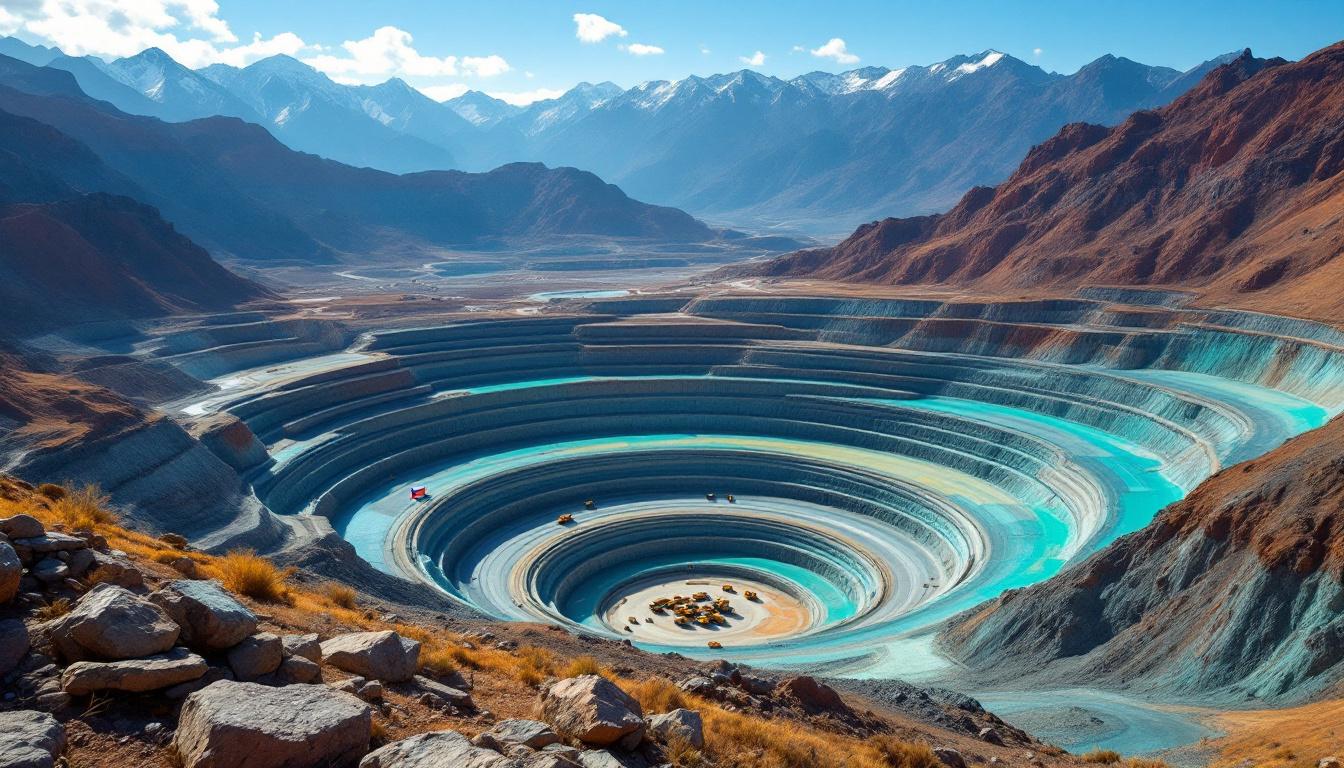Mali's Strategic Nationalization of Gold Mines
Mali has officially completed the takeover of two major gold mines previously abandoned by foreign operators, marking a significant shift in the country's approach to managing its mineral resources. The government's actions represent part of a broader strategy to assert greater control over natural resources that have historically been exploited primarily by Western mining companies.
The Recent Takeover of Abandoned Mines
The Malian government has finalized the acquisition of both the Yatela and Morila gold mines, each with its own complex history of foreign ownership and abandonment. The Yatela mine, located in western Mali's Kayes region, was abandoned in 2016 by the Sadiola Exploration Company—a joint venture between South Africa's AngloGold Ashanti and Canada's IAMGOLD—after the companies determined operations were no longer economically viable despite substantial unexploited reserves.
According to mining industry records, Yatela still contains approximately 1.5 million ounces of gold reserves, a considerable asset that remained untapped when operations ceased. The abandonment coincided with a period of relatively depressed gold prices hovering around $1,200 per ounce, making extraction costs prohibitive under the previous operational model.
Similarly, the Morila mine in the southern Sikasso region was abandoned more recently in 2022 by Australia's Firefinch, which had previously acquired stakes from Barrick Gold and AngloGold Ashanti. At the time of closure, Morila still contained an estimated 72,000 ounces of gold resources, according to Firefinch's 2021 quarterly report. The mine, once nicknamed "Morila the Gorilla" for its impressive production, left behind what government officials described as "significant environmental and financial liabilities" estimated at approximately $100 million in rehabilitation costs.
Formation of a National Mining Entity
To manage these newly acquired assets, the Malian government has established the Society for Research and Exploitation of Mineral Resources of Mali (SEMOS). This organization has been tasked with revitalizing the abandoned operations and turning them into productive assets for the national economy.
However, the government's announcement was notably light on specifics regarding how these operations would be financed or technically managed. Mining experts point out that rehabilitating abandoned mines requires significant capital investment, technical expertise, and mine reclamation innovations—all challenges for a government with limited experience in direct mining operations.
The estimated $100 million in environmental liabilities at Morila alone represents a substantial financial burden that must be addressed before production can resume. Furthermore, only about 15% of technical staff in Mali's mining sector are Malian nationals, according to World Bank data, indicating a significant expertise gap that must be overcome for successful state-led operations.
Why Is Mali Reclaiming Its Gold Resources?
Military Government's Resource Nationalism
Since taking power through coups in 2020 and 2021, Mali's military leadership has embarked on an ambitious policy of resource nationalism. The junta formally announced its intentions to nationalize mines in 2024, positioning these moves as essential to gaining greater control over the country's natural resources.
This push comes during a particularly favorable market for gold, with rising gold prices hovering around $2,300 per ounce as of June 2025—nearly double the price when Yatela was abandoned. The military government has repeatedly emphasized that traditional mining arrangements have failed to deliver adequate benefits to the Malian people despite the country's substantial mineral wealth.
In 2023, Mali introduced a new mining code that increased the mandatory state ownership stake in mining projects to 10% (up from 5%) and raised gold royalty rates from 6% to 9%. These regulatory changes reflect the government's determination to capture a larger share of mineral revenues for the state.
Regional Trend in West Africa
Mali's nationalization efforts mirror similar moves by neighboring West African states, creating a regional pattern of increasing state control over extractive industries. In Burkina Faso, the government increased its stake in new mining projects to 10% and raised mining taxes in 2023. Similarly, Niger revoked the mining permit of French company Orano at the Imouraren uranium mine in 2024.
These coordinated shifts reflect growing dissatisfaction across the Sahel region with traditional arrangements with Western mining companies, which many citizens and governments perceive as exploitative. Regional leaders have increasingly portrayed resource nationalism as an issue of economic sovereignty and decolonization, gaining popular support despite concerns from international investors.
The trend also coincides with growing Russian influence in the region, with Mali, Burkina Faso, and Niger all strengthening ties with Moscow while distancing themselves from traditional Western partners. This geopolitical realignment has created new opportunities for alternative investment sources and technical partnerships outside the Western mining establishment.
How Has Mali's Approach to Foreign Mining Companies Changed?
Increased Pressure on Foreign Operators
The military government has systematically increased pressure on foreign mining companies through multiple regulatory and financial mechanisms. Beyond the mining code changes that raised royalty rates to 9%, authorities have conducted aggressive tax audits of existing operations and imposed new environmental compliance requirements on foreign miners.
These changes represent a dramatic shift from the previous government's approach, which focused on attracting foreign investment through tax incentives and favorable regulatory treatment. Industry analysts note that Mali's investment attractiveness has declined significantly, with the Fraser Institute's Annual Survey of Mining Companies ranking Mali 40th out of 60 jurisdictions in its 2024 Policy Perception Index, a sharp fall from its previous ranking.
Several international mining companies have already responded to this changing environment. B2Gold announced in April 2024 that it was suspending additional investment in Mali "until the regulatory environment stabilizes," according to a company news release. This reaction highlights the growing concern among Western mining firms about the security of their investments in Mali.
The Barrick Gold Dispute
The most significant escalation in Mali's approach to foreign mining companies came with the government's recent decision to place Barrick Gold's Loulo-Gounkoto gold complex under state control. This move followed a protracted dispute over taxes and ownership rights that had been simmering for months.
The dispute centers on approximately $200 million in alleged unpaid taxes that Mali claims Barrick owes, according to statements made during Barrick's Q1 2025 earnings call. Barrick has disputed these claims, arguing that they have operated in full compliance with their existing agreements and applicable tax laws.
Barrick's CEO stated during the earnings call: "We are engaging with the Malian government to resolve the tax dispute," but the subsequent takeover suggests these negotiations failed to reach a satisfactory conclusion. The Loulo-Gounkoto complex is one of Mali's largest gold operations, producing approximately 13 tons of gold annually, making this takeover particularly significant for the country's mining sector.
This action represents one of the most aggressive moves against a major international mining company operating in Mali and sends a clear signal to other foreign operators about the government's willingness to assert control over mineral assets when disputes arise.
What Is Mali's Position in the Global Gold Market?
Production Significance
Mali produces approximately 65 tons of gold annually, making it Africa's second-largest gold producer after Ghana (which produces around 130 tons) and ahead of South Africa (approximately 60 tons), according to the World Gold Council's 2024 production statistics. This substantial output makes Mali a significant player in global gold markets.
The country's gold mining sector contributes approximately 25% of government revenue and accounts for over 80% of export earnings, underlining its critical importance to the national economy. Mali has eight large-scale operational gold mines, with the Loulo-Gounkoto complex and the Fekola mine (operated by B2Gold) being the largest producers.
The rehabilitation of Yatela and Morila mines could potentially increase Mali's annual gold production by an estimated 10-15%, assuming operations can be restored to their previous levels. This additional production would further cement Mali's position as a major gold supplier on the world stage.
Gold Market Conditions
Gold prices have remained strong throughout 2025, primarily driven by U.S. President Donald Trump's tariff impositions and broader geopolitical uncertainty. As of June 2025, gold trades at approximately $2,300 per ounce, representing a significant premium over production costs at most Malian mines.
These favorable market conditions potentially make Mali's gold assets more valuable than at any time in the past decade, increasing the strategic importance of controlling these resources. Analysts project continued strength in gold prices through 2025-2026, providing an opportune window for Mali to capitalize on its nationalization strategy if it can effectively restart operations at the acquired mines.
The timing of Mali's nationalization moves coincides with this period of high gold prices, suggesting the government is strategically timing its resource control efforts to maximize potential benefits. This favorable market environment provides a buffer that may help offset some of the operational challenges and transition costs associated with the nationalization process.
What Challenges Does Mali Face in Mine Revitalization?
Operational and Financial Hurdles
Revitalizing abandoned mines presents significant challenges that will test the capabilities of Mali's newly formed SEMOS organization. Primary among these is securing the necessary investment capital to restart operations at mines previously deemed uneconomical by experienced international operators.
The estimated $100 million in environmental liabilities at Morila alone represents a substantial financial burden before any productive mining can resume. Additionally, both mines will require significant capital expenditure to modernize equipment, establish new operational protocols, and implement remediation measures for existing environmental damage.
Technical expertise represents another major hurdle. According to World Bank data, only about 15% of technical staff in Mali's mining sector are Malian nationals, revealing a significant expertise gap in specialized mining knowledge. The government will need to either develop this expertise internally, which takes time, or contract external specialists at considerable expense.
Operating costs in both mines were previously high enough to prompt abandonment by experienced international operators. While higher gold prices improve the economic equation, the government must still develop more efficient operational models to make these mines viable in the long term.
"Reviving abandoned mines requires not just capital but specialized technical knowledge in geology, metallurgy, and environmental management—areas where Mali has historically relied on foreign expertise," noted a mining analyst familiar with West African operations.
Geopolitical Considerations
Mali's shift away from Western mining interests toward potential Russian partnerships comes with significant geopolitical implications. In March 2024, Mali signed a deal with the Russian Wagner Group for security and mining industry evolution, according to Reuters reporting. This realignment could affect international support, technical assistance, and market access.
Western financial institutions and mining equipment suppliers may be reluctant to engage with nationalized mines, particularly if Mali continues to strengthen ties with Russia. This could limit access to capital, spare parts, and technical support necessary for successful operations.
Additionally, Mali's military government faces international sanctions and diplomatic isolation from regional bodies and Western governments, potentially complicating export arrangements and financial transactions associated with gold sales. While gold remains highly fungible and marketable globally, these complications add another layer of challenge to the nationalization strategy.
The success of Mali's pivot toward Russian technical assistance in mining remains unproven, with few examples of successful Russian-backed mining operations in Africa to date. This creates additional uncertainty about the long-term viability of Mali's nationalization strategy in the absence of Western technical partners.
What Are the Implications for International Mining Companies?
Changing Risk Assessment
Foreign mining companies operating in Mali and similar jurisdictions must fundamentally reassess their risk profiles in light of increasing resource nationalism across West Africa. The Barrick Gold case demonstrates that even major international operators with decades of presence in the country are vulnerable to government intervention.
Companies must now factor in heightened risks of contract revisions, retroactive tax assessments, and potential nationalization when evaluating the economic viability of both existing operations and new projects in Mali. This changed risk calculation has already prompted some companies to reconsider their exposure to the country.
Mali's mining policy perception ranking fell to 40th out of 60 jurisdictions in the Fraser Institute's 2024 Annual Survey of Mining Companies, reflecting deteriorating investor confidence in the stability of the country's regulatory environment. This decline in ranking will likely affect investment decisions for years to come, regardless of the success or failure of current nationalization efforts.
For companies currently operating in Mali, increasing political risk premiums may render some marginal operations uneconomical, potentially leading to more mine closures or sales in the coming years unless the government can establish a more predictable regulatory environment.
Future Investment Considerations
International mining firms are actively developing new partnership models and risk mitigation strategies in response to Mali's changing approach. Some companies have proposed joint venture structures with significantly higher government ownership stakes from the outset, hoping to preemptively address resource nationalism concerns.
Others are reassessing the economic viability of projects given changing fiscal terms, incorporating higher discount rates in valuation models to account for increased political risk. This recalculation may render some previously attractive projects uneconomical, redirecting investment capital to jurisdictions with more stable regulatory environments.
Several mining executives have indicated a shift toward considering alternative investment destinations with similar geological potential but more predictable regulatory frameworks. Countries like Ghana, Côte d'Ivoire, and Tanzania have been mentioned as potential beneficiaries of capital reallocation away from Mali and its neighbors pursuing aggressive resource nationalism.
For companies committed to maintaining operations in Mali, developing stronger relationships with local communities and demonstrating more visible economic benefits may become increasingly important as a strategy to build political support and reduce nationalization pressure.
The Future of Mali's Gold Mining Industry
Balancing Sovereignty and Investment
Mali's government faces the complex challenge of balancing national resource sovereignty with the continued need for technical expertise and capital investment that international partners can provide. The success of this balancing act will largely determine whether the nationalization strategy yields long-term benefits for the country.
The government must develop a coherent operational and financial plan for SEMOS that addresses how the newly acquired mines will be financed, staffed, and operated. Transparency in this process would help rebuild investor confidence in the broader mining sector while demonstrating the government's commitment to responsible resource management.
While complete self-sufficiency in mining operations may be the stated goal, pragmatic partnerships with technical operators—whether from Russia, China, or traditional Western mining nations—will likely be necessary in the medium term given Mali's limited domestic mining expertise.
Creating a hybrid model that increases state participation while maintaining access to international capital and expertise may offer the most sustainable path forward. Such an approach would allow Mali to capture more value from its mineral resources while avoiding the pitfalls that have plagued some fully nationalized mining sectors elsewhere in Africa.
Potential Economic Outcomes
The success of Mali's nationalization strategy will depend on several critical factors, including the government's ability to secure financing for mine rehabilitation, develop technical capacity to operate mines efficiently, manage environmental liabilities, and maintain operational discipline in the face of political pressures.
If successfully implemented, the strategy could significantly increase government revenues from the mining sector, particularly given current favorable gold price forecast. These additional revenues could fund development initiatives and public services, potentially strengthening the government's domestic political position.
However, if the revitalization efforts fail due to financial constraints, technical challenges, or mismanagement, the result could be stranded assets that neither produce revenue nor create employment. This outcome would not only represent a missed economic opportunity but could also create additional environmental liabilities if mines remain in limbo.
The broader impact on Mali's mining sector remains uncertain. If nationalized mines demonstrate operational success, the model could be expanded to other assets. Conversely, operational failures might force a reevaluation of the nationalization strategy and potentially lead to renewed openness to foreign investment under revised terms.
The coming 12-24 months will be critical in determining which of these scenarios materializes, with significant implications for Mali's economic future and the broader trend of resource nationalism in West Africa.
FAQ: Mali's Gold Mining Nationalization
How will Mali finance the rehabilitation of these abandoned mines?
The government has not disclosed specific financing plans for revitalizing the Yatela and Morila mines, which represents one of the most significant uncertainties in the nationalization strategy. Potential financing options include state budget allocations, loans from international financial institutions (though these may be limited given current sanctions), or partnerships with alternative investors from Russia or China. The government might also consider issuing mining bonds or creating a sovereign mining fund, though these approaches would require significant financial market confidence in Mali's mining governance.
What precedents exist for successful mine nationalizations in Africa?
While some African countries have successfully nationalized mining operations, results have been mixed across the continent. Botswana's partnership with De Beers through Debswana represents one of the more successful models, with the government maintaining a 50% ownership stake while benefiting from private sector technical expertise. In contrast, Zambia's nationalization of copper mines in the 1970s led to declining production and eventual reprivatization. Ghana's partial nationalization approach, maintaining significant state interests while welcoming foreign technical partners, has generally yielded more positive results than complete nationalization efforts elsewhere on the continent.
How might Mali's actions affect future foreign investment in its mining sector?
The nationalization trend could potentially deter Western investment while attracting alternative partners, particularly from Russia and China, who may operate under different investment models. Companies already operating in Mali are likely to minimize additional investments until the regulatory environment stabilizes, as demonstrated by B2Gold's announced investment pause in April 2024. New entrants to the market will likely demand higher returns to offset increased political risk, potentially leading to less favorable terms for Mali in future mining agreements. The overall effect will likely be a significant reduction in Western mining investment in the short to medium term, with uncertain prospects for replacement investment from alternative sources.
What environmental challenges do these abandoned mines present?
The government statement specifically mentioned "significant environmental liabilities" at the Morila mine, suggesting potential remediation costs and challenges that must be addresse
Ready to Invest in Companies Discovering the Next Major Gold Deposit?
Discover potential market-moving ASX mineral announcements before they happen with Discovery Alert's proprietary Discovery IQ model, giving you an immediate edge in the competitive mining investment landscape. Visit Discovery Alert's discoveries page to explore how past mineral discoveries generated substantial returns and how you can position yourself for the next opportunity.




